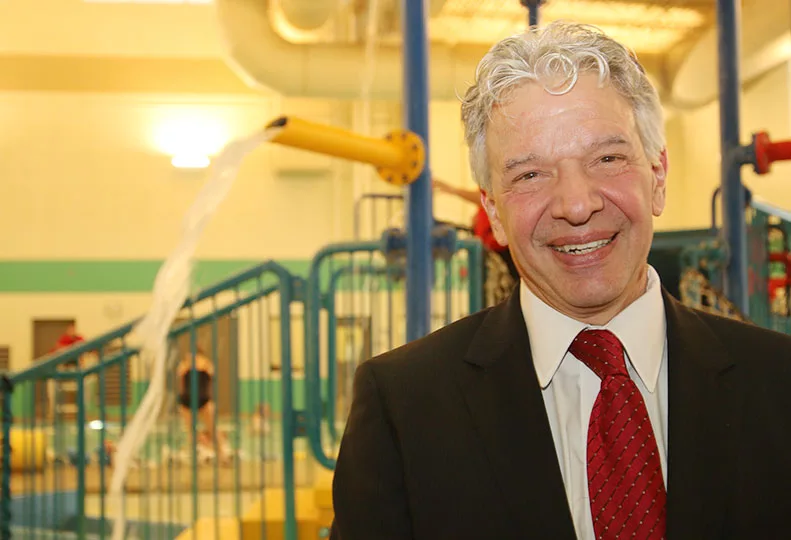YMCA outlines strategic plan for next three years
Donations, programs help support children, families

The YMCA of the Inland Northwest has rolled out its three-year strategic plan, and the nonprofit organization is on track with its annual fundraising campaign, already having raised 40 percent, or $184,000, of its annual fundraising goal of $456,000 so far this year, says Steve Tammaro, YMCA’s president and CEO.
Its goals for the next three years include further building relationships with members and donors, increasing community awareness of the YMCA and its mission, and collaborating with new partners, says Tammaro.
“We want to instill a cause-driven culture with staff and volunteers to focus,” he says, adding that YMCA causes include community issues, health education and economic disparities among different groups.
“We want to improve communication of our cause to both internal and external audiences with one Y voice,” he says.
The 130-year-old organization is much more than a gym, he says, and the strategic plan is designed to get that message across to the community.
Engaging new markets and developing community collaborations is another tenet of the strategic plan, he adds. Tammaro says the strategic plan highlights the focus on philanthropy and deepening the sense of belonging in the community by individualizing that experience.
Tammaro says the YMCA had more than 40,000 individual members in 2014. Membership has declined since 2009, he says, “in part, because of the economy,” he says.
Program and membership fees don’t cover all the costs of providing the organization’s community programs and services, so support from donors is needed to cover the financial gaps, he says.
Tammaro says the YMCA depends on a little more than 10 percent of its budget from public support for services it provides to the community. It also receives support from private foundation grants, Spokane County United Way, and from various other sources.
Every year that funding goes to programs like youth sports, scholarships for the Y’s summer camp, child development programs, a diabetes prevention program, teen programs, and swim lessons, among others, says its top executive. Other focuses include programs for cancer survivors’ wellness, youth sports, and child care.
The demand in the Spokane community means the YMCA typically provides about $1.6 million in financial assistance for programs that serve the community, he adds.
“We always run out of money before we run out of kids and families to serve,” he says.
This year’s goal of $456,000 is still far from the actual costs of its programs, Tammaro says.
Tammaro says while the public may think of the YMCA as a gym or a swimming pool, they might not realize the depth of its charitable mission.
With a $16 million annual budget, it operates three facilities that offer fitness, sports, youth activities and child care programs.
Two of those centers—the YMCA/YWCA Central Spokane facility, at 930 N. Monroe, and the North Spokane YMCA, at 10727 N. Newport Highway—opened in 2009. The Spokane Valley YMCA, at 2421 N. Discovery Place, opened in 2000. A former downtown YMCA facility in Riverfront Park closed in 2009 and since has been torn down.
In 2014, there were 1.4 million visits to the three facilities.
The YMCA also operates the 555-acre Camp Reed located on Fan Lake north of Spokane, for which it provides scholarships every year. Tammaro says more than 400 campers last year received scholarships valued at a total of more than $95,000.
Before- and after-school programs in Spokane County serve about 600 children from 21 schools in six school districts, 30 percent of whom attend with YMCA scholarships, he adds.
The YMCA employs about 800 people overall, with just over 100 of those in full-time positions. The majority are part-time employees such as lifeguards, exercise instructors, teachers, and camp counselors.
The YMCA relies on donations to provide community services regardless of a person’s ability to pay, and about 30 percent of the Y’s members receive some assistance toward their membership fee costs, he says.
Members who can’t afford program costs also can apply for assistance to provide for a child to receive swim lessons or to be enrolled in summer day camps. People or families with a household income of $55,000 or less a year are eligible to pay membership fees based on a sliding scale.
Tammaro says one area the strategic plan calls for is giving by Y members. He says only 4 percent of YMCA members here contributed to last year’s support campaign, while the national average is 16 percent of members contributing to the annual fundraising drive.
“We really want to grow the membership giving,” Tammaro adds.
Related Articles

_c.webp?t=1763626051)

_web.webp?t=1764835652)
